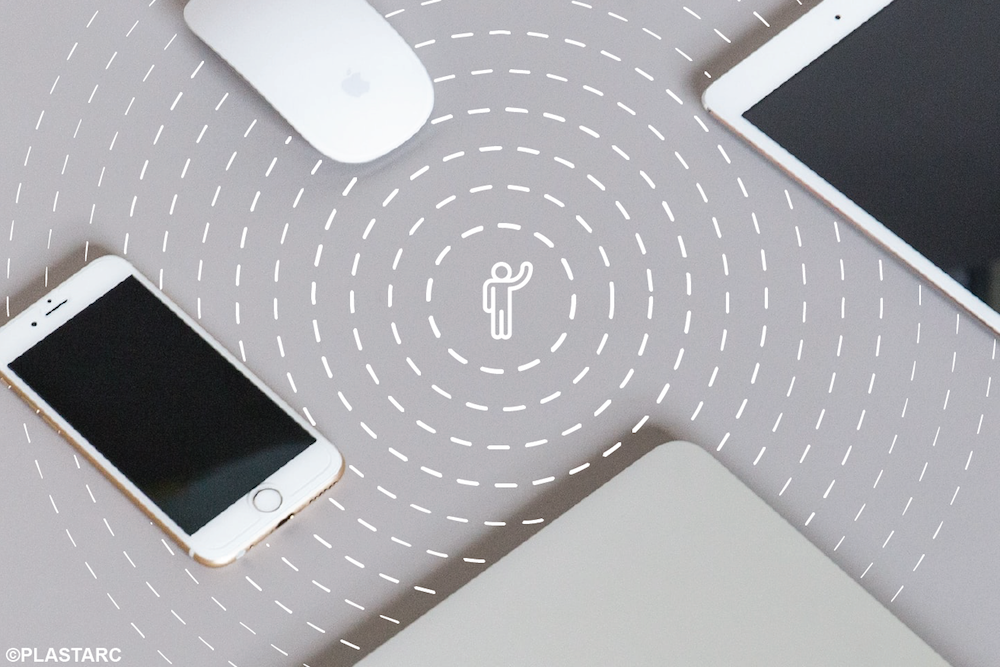PLASTARC’s Melissa Marsh and Mike Sayre explore how the effects of COVID will shape portfolio strategy in the years to come.
In past year, the workplace landscape has changed dramatically. Even after the real estate market recovers from the dramatically lower space requirements of the moment, it won’t be the same. The widespread adoption of telework, coupled with continuing concern about the role of workplace in supporting wellness, is driving changes in what people want and expect from their offices. This will shape portfolio strategy in the years to come.
As part of our ongoing webinar series guiding clients and colleagues through this period of change, PLASTARC has conducted surveys about expectations for the future of work. The data we collected reveal the magnitude of the challenge presented to traditional office spaces. Respondents indicated that they expect to spend 2.7 days per week, on average, working outside of the office after COVID-19 restrictions are lifted, versus 0.9 days before it began. In aggregate, that is an enormous change. Moreover, much of the shift comes from people who had never practiced telework before, but now expect to do so with regularity.
The implications for occupancy, building design and lease arrangements are huge, but it’s still something of an open question how organizations will adapt. As Martha O’Mara described during our recent panel on forward-looking strategy, this has compounded the difficulty inherent in making long term real estate commitments in uncertain business climates. However, what is certain is that there is now a greater need than ever to focus on purpose of place. COVID has led to a reevaluation of space on every scale—from individual offices to cities and regions—requiring a new level of elasticity from the workplace. In order to adjust to this reality, employers need to redouble their commitment to human metrics and reconsider the role of coworking in their operations.

Living and working are both on the move
Cities are expensive places to have offices, but are still amongst the best locations because that’s where talent wants to be—or so we thought. A survey by NYT and Morning Consult revealed that fully one third of remote workers would move to a new city or state if telework continues. For corporate leaders, the financial and people incentives have now aligned in support of decentralization.
Many professionals will now be splitting their working time between two or three places. Main offices in urban cores will still exist—though they may be significantly smaller or configured differently—and working from home will continue. It is also likely that people will want a third near-home location, perhaps in a coworking space or satellite office shared with colleagues who live nearby.
As recently as two years, ago, conventional wisdom was that the millennial love affair with the urban core would last forever, fueling the growth of urban cores. However, as Greg Lindsay of NewCities notes in his recent research, this is proving not to be the case. Long-term economic and real estate trends are pushing millennials to 2nd- and 3rd-tier cities away from the urbanized coast. As we previously wrote, the migration toward smaller towns with walkable amenities predates COVID. Now it has taken off, and organizations need to adapt their spaces, amenities and programming in order to continue to attract and enable these workers.

The new elastic office
Rapid shifts in location preferences translate to a greater need for flexibility in physical spaces. Pre-COVID, offices were typically 40-60 percent occupied. Going forward, there will likely be much more day-to-day variation in occupancy levels. On many days, much of the company might be working from home—maybe only 20 percent of them physically present. However, from time to time, in-person meetings or programming might call in up to 90 percent of personnel. The space has to be capable of handling these swings in occupancy. During low periods, it can’t feel desolate. When everyone is on-site, it must avoid feeling too cramped.
A new generation of amenities is needed for a 2 or 3-days-per-week usage pattern. These should enrich one’s work experience and make life easier while supporting wellness as a core objective. For example, instead of a catered lunch, the office might offer food to bring home to the family—both a perk and an acknowledgement that commuting to the office necessarily takes some time from domestic tasks.
Now that the office is now a bit more novel, on-site can become the new off-site.
Specific spatial patterns are also due for a rethink. For example, we need new spaces that support the use of collaborative video that many of us now rely upon, which is a richer experience than the videoconferencing of just a few years ago. When 5-10 people were sitting around a single camera pointed at a table, or were speaking only via audio, the room was arranged to support that. Now that most meetings may have multiple people on video and a few people physically present, how does the physical space change to reflect that?
If less space is used for desks, more can be freed up to focus on culture and experience. Now that the office is now a bit more novel, on-site can become the new off-site. Retreats, events, programs and activities that might have happened elsewhere can now happen in the office instead—provided, of course, that the space is designed to accommodate them.

Human metrics more central than ever
At the beginning of 2020, the experiences most people were having at work did not look like the future. Offices were still very much designed around the legacy of paper files and landline phones. There were a lot of half-full conference rooms and under-used desks. Aside from the cost of maintaining spaces that are not fully utilized, this shows that many workplaces were not delivering on user needs. Even without official policies in place, many were still working anywhere but the office!
Part of the value of human metrics is that they make the elastic office possible. People data can and should shape strategic real estate decisions, and should be used to help organizations adapt to the changing landscape. One of the reasons we have been bullish on telework for years is that, done correctly, it is good not just good for the employee, but good for the organization too. It requires purposeful communication and feedback, which can improve the experience for people in and out of the office. It requires figuring out how to support individual and team needs by collecting the right data. Desirably, many organizations are now doing this work and listening to their people. They just need to keep it going.
Organizations need to ask people what they want, and with a greater degree of specificity than is typically seen. People are experts in themselves, their own behavior and their preferences. Each person and role deals with very different sets of problems and has unique workplace needs. Ask them what they need and want, not speculative questions about the future of work or how their office should look in 10 years.

Corporates turn to coworking
One area in which employers can find common affinity with employees who are ambivalent about returning to work is in coworking spaces. Not just havens for tech startups and solopreneurs, these have already garnered significant interest in these shared spaces from large, established corporate players. Now that people are less tethered to their physical HQ than they were before, the use of coworking by corporates is likely to take off.
This makes room for interesting possibilities. Coworking spaces could begin to function a bit more like business incubators, specializing in particular industries or companies that share culture. This is a way to stimulate opportunities for cross-pollination, collaboration, or networking. This has pre-2020 precedent. For example, Verizon has for years been expanding their innovation spaces, which invited other companies into underutilized buildings in an arrangement that harnesses some of the best of coworking. Even earlier, look to the GRiD70 project in Grand Rapids, MI, which pioneered the serviced office for well-established companies.
Coworking spaces could begin to function a bit more like business incubators, specializing in particular industries or companies that share culture.
To change your spaces, change your mindset
Organizations now have an opportunity to rethink their role in the lives of their people and their communities as a whole. Work and life have become more integrated, with telework allowing people to spend more time in the communities they call home even while remaining part of their work teams. This makes more obvious what has always been true: the way organizations choose to support their people has impacts far outside the office walls.
Historically, the norm has been to approach real estate as a cost center—rather than as an enabler of human performance and culture. This problematic mindset causes organizations to miss opportunities to make the investments and portfolio strategy changes that are necessary to support their people and advance their business. Organizations that define their real estate success only in terms of dollars and square feet often do not see how their spaces fail to live up to expectations. Now that so much of the workforce has become more adept at working out of the office—and are likely to continue to do so even after COVID is long gone—that mindset will have to change.

